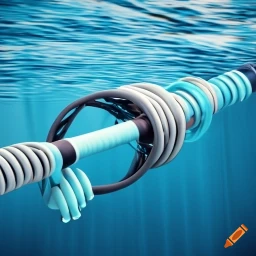
These cables are the unseen backbone of our modern, interconnected world, enabling everything from simple internet browsing to high-speed financial transactions. However, these vital data links are potentially at risk from a variety of factors.
Environmental hazards are a primary threat to these cables. Hurricanes, with their powerful winds and waves, can displace or damage these cables. Earthquakes, particularly in tectonically active regions, can cause the seabed to shift, severing cables or causing kinks that can impede data transmission. Tsunamis, the aftermath of undersea earthquakes, can also result in similar damage. The impact of these natural disasters on the cables can cause significant disruptions to data transmission, affecting everything from individual internet connections to global financial systems.
Human activities, such as fishing and shipping, pose another set of risks. Fishing nets, particularly trawling nets that scrape the seabed, can accidentally sever or displace cables. Shipping activities, especially anchoring in areas with undersea cables, can also inadvertently cause damage. These unintentional human actions can disrupt the smooth functioning of the global telecommunications network.
Further complicating the issue are threats of intentional sabotage or cyber-attacks on these cables. Given the strategic importance of these cables to global communication, they are potential targets for those seeking to disrupt international data flow. The effects of such an attack could be far-reaching, with significant geopolitical implications.
In response to these risks, considerable efforts are underway. Strategies include routing cables away from known hazard zones, such as areas with frequent natural disasters or heavy shipping traffic. Advances in cable design are also being made to help them withstand environmental pressures, such as deep-sea pressure and strong currents. Additionally, security measures are being implemented to deter potential saboteurs, including surveillance and protective legislation.
Despite the numerous challenges, the global undersea cable network is remarkably resilient. Its built-in redundancy—multiple cables serving the same route—ensures that even if one cable is damaged, data can still flow via alternative paths. This resilience, combined with ongoing efforts to mitigate risks, ensures that for the most part, our world remains interconnected, with data continuing to flow uninterrupted.
---
Note: If the text above is not clear, the reason is probably that ShowMoor has encrypted it.
Press the ShowMoor -button, join the community and you can - in addition to this - enjoy everything the service has to offer - for a small subscription fee.